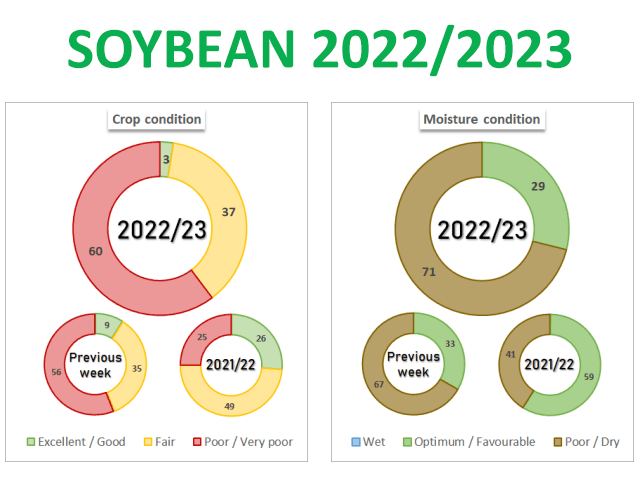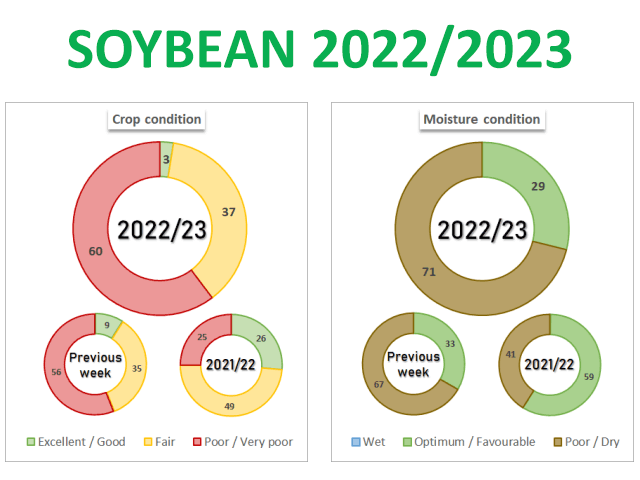South America Calling
Crop Conditions Continue to Fall in Argentina After Frost
A briefly active period in which Argentina saw somewhat regular showers and a slight increase in crop conditions came to an end last week with more dryness. However, the big story out of the country was the unusual frost on Feb. 18. After a cold front went through, temperatures dropped significantly.
Days before, daytime high temperatures hovered around 38 Celsius (100 Fahrenheit), However, after the front dropped through, temperatures fell significantly. With calm winds, clear skies, and dry soils, temperatures fell to near freezing, with some areas reporting frosts.
To put this in perspective, it would be the equivalent of Oklahoma or Tennessee experiencing a frost in mid-August -- absolutely unfathomable.
P[L1] D[0x0] M[300x250] OOP[F] ADUNIT[] T[]
The harsh conditions yet again led to reduced crop conditions. According to the Buenos Aires Grain Exchange on Feb. 23, corn is sitting at 9% good-to-excellent while soybeans are at just 3%. Meanwhile, poor-to-very poor conditions have risen yet again to 51% and 60%, respectively. This matches the poorest conditions of the season for soybeans, which was set in mid-January. Such poor conditions this late in the crop year are making it difficult for even good weather to turn the crop around. But the weather still will not cooperate.
At least for the next couple of weeks, the dryness will continue, with heat becoming a factor yet again next week. There may be some isolated showers moving through at times, but nothing that would remotely be considered helpful for a crop in such poor condition.
And the crop is at an advanced stage, especially the early-planted corn, which is now 27% mature and waiting to be harvested. Later-planted corn is mostly in the silking and filling stage and while rain won't hurt, the potential yields have already been set. If rains come, the corn will reach that potential. If they do not, the yields will continue to drop. Soybeans still have a chance with roughly half dropping pods and only 16% of the crop filling seed. Rains are now critical though as the crop has had to endure incredible stress.
Spotty showers will be possible through the weekend and a front going through on Mar. 1 could provide enough for scattered showers. But those will still be hit-or-miss showers and unlikely to change the outcome of either crop.
Longer-range versions of the European and American models agree at bringing more potential rainfall for the Pampas region of Argentina in the last half of March. By then, it will be too late for much of the corn, but soybeans may find a way to salvage a lost season. The heat is forecast to continue, however. So if showers do not come as forecast, it will be a rough end to a rough season.
To find more international weather conditions and your local forecast from DTN, visit https://www.dtnpf.com/….
John Baranick can be reached at john.baranick@dtn.com
(c) Copyright 2023 DTN, LLC. All rights reserved.





Comments
To comment, please Log In or Join our Community .